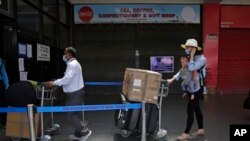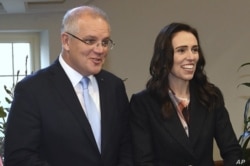Asia Pacific countries with quick improvement in their coronavirus cases will consider forming “bubbles” that let people travel from one spot to another but keep restricting people from more heavily infected places, some analysts predict.
Cases of the often-deadly virus-induced respiratory disease COVID-19 have, so far, waned across much of the region. Australia, Hong Kong, Macau, New Zealand, South Korea, Taiwan, mainland China and Vietnam reported some of the world’s lowest caseloads over the past month.
To cut off disease transmission from overseas since March, Asian governments have banned the entry of foreign nationals except long-term permit holders. Locals and permit holders must spend 14 days in quarantine after each entry.
Analysts say country-to-country bubbles would jumpstart aviation, tourism and conferencing, all of which have taken hits since the global pandemic started in Asia in late January. As many as 49 million tourism-related jobs are at risk in the region, the industry group Word Travel and Tourism Council estimates.
“It’s very much an issue about how to reopen travel and not only for tourism but also for business, because business travelers also cannot travel, and the whole region is facing this issue that nobody can move from one country to another, so it’s definitely a key topic that countries are considering,” said Rajiv Biswas, Asia-Pacific chief economist at IHS Markit.
Australia Prime Minister Scott Morrison and his New Zealand counterpart, Jacinda Ardern, have met to discuss establishing a quarantine-free travel zone for their two countries, according to Australian media reports this month. Results could establish a bellwether for other countries with low virus caseloads, Biswas said.
No one else is in formal talks on bubble travel, but “greater China” could be the next to explore the idea, Biswas said. That zone refers to Hong Kong, Macau, mainland China and Taiwan. Parts of the mainland with relatively few cases would particularly qualify to join a bubble, he added.
A Hong Kong Executive Council member suggested in comments to domestic media this month that the territory form a bubble with Macau. Macau is an hour away by ferry and normally popular with Hong Kong casino gamblers.
Taiwan could consider opening inbound travel to “low-risk” countries and exempt their visitors from 14-day quarantines, said Chiu Cheng-hsun, deputy director of Chang Gung Memorial Hospital near Taipei. Those visitors would instead take their temperatures daily and report any suspicious symptoms to their travel agencies, he suggested.
Visitors from “moderate-risk” or “high-risk” countries – those with large numbers of new cases – could come back too but subject to quarantines of seven to 14 days, Chiu said. “Taiwan can open up to accept international tourists, but it needs to manage them,” he said. “We should welcome everyone to come and travel. That way we can boost our economy.”
A Taiwan foreign ministry spokesperson suggested that any decision to reopen for travel would come from the government’s Central Epidemic Command Center.
Taiwan has gone for a month with no local transmission and just a trickle of infections from overseas. Its coronavirus caseload stands at 440 with 372 of those recovered. Vietnam reports 288 cases with 249 resolved. In Hong Kong, 985 of the territory’s 1,048 cases have recovered.
Bubbles would show whether it’s safe for people to start moving around again and challenge countries to limit new coronavirus outbreaks, experts say. Governments would prepare to trace the contacts of people who came in sick from abroad to stop outbreaks in the larger population, for example.
Countries under a bubble would need ways to bar people from third countries, which could be more infected, said Stephen Nagy, senior associate professor of politics and international studies at International Christian University in Tokyo.
“I think there will be safe zones established and they’ll probably enhance the tracing of where people have traveled and look at the past three or four destinations,” Nagy said.







